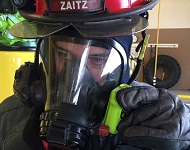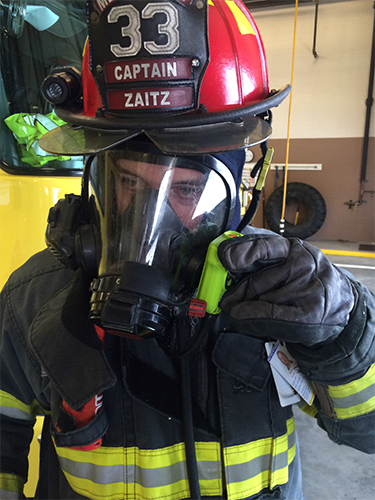

By Brian Zaitz
The ability to effectively communicate will dictate success or failure on the fireground. Although face-to-face communications are optimal, many times they are not practical. Often, we find out that communications are done through radio transmissions and are often done through the obstacle of the self-contained breathing apparatus (SCBA) mask. These communications are often garbled or non-audible due to the muffling of the mask or feedback from the SCBA regulator. This can be overcome with practice and proper microphone placement.
When communicating with the SCBA mask on, it is often times thought to place the microphone on or near the voice amplification device. Although this is logical, it is not practical; the voice amp causes feedback and does not provide for a clear transmission of the message.
RELATED: Finney on Fire Scene Communications ‖ Anderson and Mummert on Reliable Communications and the Hazard Zone ‖ Parrot on The Corpus Christi System
Another thought is to place the microphone in front of the regulator. This is common, as this is the normal microphone used during normal operations. However, because of the vibration of the regulator mixing with the voice, the message, once again, becomes muffled and indistinguishable.
The preferred method is to place the microphone flat against the exhalation port on the mask. Placing the microphone flat allows for clear voice transmission with little static from the regulator or voice amp. Likewise, the microphone receives minimal ambient noise as the distance between devices is minimalized. When preparing to communicate by radio, take a breath and think about your transmission; ensure that it is a necessary transmission.

Begin by clearly identifying your desired audience. For example: “Engine 1 to Command.” The return communication from command ensures they are listening and ready to receive your message. This simple process will aid in effective communications between the sender and receiver.
Effective communications creates a more efficient and safer fireground. Take time to practice communicating with your SCBA before you get your next alarm.
Download this training bulletin as a PDF HERE (5.7 MB)
 Brian Zaitz is a 14-year student of the fire service, currently assigned as the captain/training officer with the Metro West (MO) Fire Protection District. Brian is an instructor with Engine House Training, LLC as well as instructor at the St. Louis County Fire Academy. Brian holds several degrees, including an associates in paramedic technology, a bachelors in fire science management, and a masters in human resource development. Brian is currently and accredited chief training officer and student of the National Fire Academy’s Executive Fire Officer Program.
Brian Zaitz is a 14-year student of the fire service, currently assigned as the captain/training officer with the Metro West (MO) Fire Protection District. Brian is an instructor with Engine House Training, LLC as well as instructor at the St. Louis County Fire Academy. Brian holds several degrees, including an associates in paramedic technology, a bachelors in fire science management, and a masters in human resource development. Brian is currently and accredited chief training officer and student of the National Fire Academy’s Executive Fire Officer Program.
MORE THROW BACK TO BASICS

